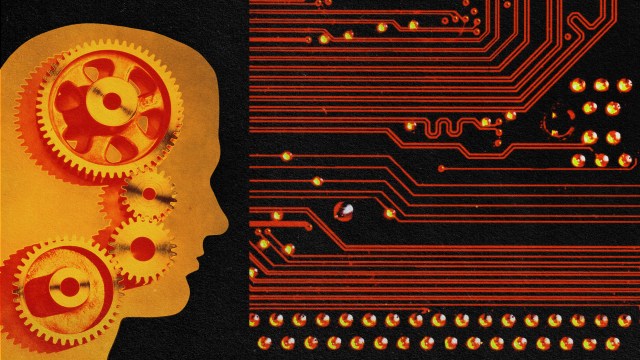How could we tell if those “alien bodies” in Mexico are legit?

- Twenty years ago, a six-inch-long skeleton called “Ata” was proposed to be an alien because of its elongated cranium, accelerated bone age, and the fact that it had fewer ribs than a typical human. But it was a human.
- A real alien body is unlikely to resemble a human and probably would have a cellular biochemistry completely foreign to anything found on Earth.
- Anything with DNA is almost certainly not an alien.
Last week, I was contacted by a German documentary producer, asking if I was willing to be interviewed about two mummified bodies presented at a Mexican congressional hearing by TV personality Jaime Maussan, who claimed they were aliens.
I declined, explaining that I didn’t have any inside knowledge about the alleged discovery. But I did say in a written statement that I was skeptical. The “bodies” shown at the hearing look a little too humanoid to me. That is what we have come to expect from decades of science fiction movies, but in actuality, I would not necessarily expect aliens to look like us.
Most outside observers also were skeptical about Maussan’s “mummies,” with many dismissing them as outright fakes. But it got me thinking: If one day, somebody comes forward with a body that appears at first glance to be extraterrestrial in origin, how would we know for sure? How would we positively identify an alien?
“Ata”
There’s actually a precedent for the “aliens” shown to the Mexican Congress. Similar claims were made about a six-inch-long skeleton called “Ata” discovered in the Atacama desert of Chile 20 years ago. Several investigators proposed that the tiny body was of alien origin because of its elongated cranium, accelerated bone age, and the fact that it had fewer ribs than a typical human.
After a research group led by Sanchita Bhattacharya from the University of California-San Francisco performed whole-genome sequencing, however, Ata turned out to be a human with previously unknown genetic mutations that caused abnormal tissue growth. Two subsequent papers, one by Gary Nolan and Atul Butte, and one by a team led by Siân Halcrow from the University of Otago in New Zealand, confirmed that assessment. While Ata’s specific mutations were new to scientists, it was widely known that mutations can greatly disfigure a human body. Such abnormalities have long fascinated the general public as well as scientists, even ending up as curiosities in places like the Mütter Museum in Philadelphia.
So, DNA analysis provided clear evidence that the skeleton was human. In fact, if we find DNA at all, it is safe to say the body is probably from Earth. DNA is just one of many possible nucleotides that could form the basis of life elsewhere in the Universe.
Francis Crick, co-discoverer of DNA, referred to our genetic code as a “frozen accident.” Many deviations from the code could have been possible, including the substitution of bases that we see in RNA right here on Earth. Steven Benner from the Foundation for Applied Molecular Evolution has shown convincingly that nucleotides with six bases instead of four (as in DNA) could effectively transfer genetic information. Work by Ned Budisa from the University of Manitoba in Canada suggests that extraterrestrials might use a different set of amino acids for coding. Gerald Feinberg and Robert Shapiro went even further and speculated that information transfer could occur magnetically rather than chemically. While there is no question that DNA is a highly optimized code for life, significantly better alternatives would exist under slightly different environmental conditions.
Alien biochemistry
For the sake of discussion, let’s not rule out that an alien body could have DNA like ours. It still would very likely have a completely different biochemistry. Their cells might not use ATP for energy production, as human cells do. Alien blood might not be red or have hemoglobin at all. It could be any color, in fact — there are lizards on Earth with green blood and octopuses with blue blood. Even on a planet with an environment exactly like Earth’s, different biological solutions might evolve from chance events, since the same functions can be provided by different biochemistries. Photosynthesis, for example, can be done with chlorophyll in plants, but also with rhodopsin and carotenoids. The chemicals in an alien’s body might have isotopes that are rare on Earth, and that might be a clue to an extraterrestrial origin.
But unless the biochemistry is fundamentally different from ours, we would still have to assume the body is from Earth. And that poses a dilemma. While difference is a useful criterion for identifying aliens, creatures from another planet, which evolved under physical conditions unlike those on Earth, might be so different as to be unrecognizable at first glance. We are intrigued by bodies like Ata’s precisely because they look like us, but not quite. If they looked too different, we might miss noticing them altogether.
Calling Fox Mulder
It is no surprise, then, that most reported “aliens” look humanoid. There is a lot to be said about the advantages of bipedal anatomy for evolving intelligence, given that nature, when faced with a similar set of environmental challenges, tends to come up with similar solutions — a principle called convergent evolution. But I think nature is much more creative than many of us think, particularly on an alien planet with a different origin story for life and a different history.
Every astrobiologist I know, myself included, wants to find an alien. But I am skeptical when the “aliens” look like tiny humans.





